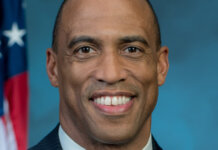old axiom about silver linings within dark clouds holds true in today's industry.[/b] Whereas many sectors have either crashed or are struggling to stay active, one mortgage product is showing no signs of slowing down: reverse mortgages. But while reverse mortgages offer a rare bright spot in today's industry, there are still issues relating to consumer, lender and investor awareness that may slow the sector's progress. In January, the Department of Housing and Urban Development (HUD) issued a report on the state of the federally insured home equity conversion mortgages. According to HUD, there were 115,176 reverse mortgage closings in 2008 – a 6.4% increase over the previous year. The report found the highest level of reverse mortgage activity was in Miami, with 9,561 loans closed, followed by Los Angeles, with 4,126 loans closed. The remaining top 10 cities for reverse mortgage activity were Tampa, Fla.; Santa Ana, Calif.; Baltimore; Phoenix; Orlando, Fla.; Richmond, Va.; Philadelphia and Chicago. However, Peter Bell, president of the National Reverse Mortgage Lenders Association (NRMLA), the trade organization for the sector, doesn't feel 2008's numbers are worthy of a champagne toast. ‘I don't think 2008 was a strong year,’ he says. ‘There was a lot of demand held back until late in the year that is only now hitting the books.’ What are the reasons for the success of reverse mortgages in the midst of the current crisis? There are several socioeconomic factors at play. Reverse mortgages have been available for three decades, but for most of that period, there never seemed to be a wide borrower base to justify the active promotion of the product. Today, however, the expansion of the U.S. senior population is now bringing the long-awaited customer base for the product. ‘We're developing more seniors every day, and it's a growing market,’ says David Bernstein, national reverse mortgage specialist with Barclay Funding, Rockledge, Pa. ‘I believe the Federal Housing Administration's (FHA) reverse mortgage program, within the next two to three years, will be one of the largest mortgage programs.’ While more people are becoming senior citizens, the proverbial golden years they may have been expecting have been tarnished by the current economic crisis. Randy Gilster, president of First American Loan Production Services in Westlake, Texas, points out that the recession caught many people off guard, resulting in a disruption to the traditional forms of financial planning. ‘During the boom years, rising home values and healthy stock market gains provided a range of options for seniors and older Baby Boomers looking for ways to pay for retirement,’ he says. ‘Remember, these groups tended to have higher savings, more investments and more home equity than younger Americans. But seniors and older Baby Boomers have been hard hit by the economic downturn. They've seen a sharp drop in their equity accounts and 401(k)s. Meanwhile, falling interest rates are hurting retirees with fixed income investments. Pensions and retiree health benefits are being cut back or eliminated.’ Glister adds that it is not only retirees who are feeling the pain – those 62 years and older who are still in the workforce are also getting hurt. ‘Older – often more highly paid – employees are losing their jobs in corporate downsizings,’ he adds. ‘There's no question that older homeowners are facing new economic pressures.’ Bell adds that a traditional strategy for the cash-strapped – the sale of a home – is not much of an option today. ‘People who would have sold their homes didn't want to sell into a down market,’ he says. ‘That is the driver.’ The fear of foreclosure is also a reality with this demographic. ‘Foreclosure data by age is hard to come by, but according to an AARP study of loans during the second half of 2007, 7.3 percent of all delinquencies and foreclosures were with consumers aged 62 and higher,’ says Glister. ‘This works out to approximately 177,000 borrowers. When you add Baby Boomers to the mix, and drop the age criteria to 50 or older, approximately 650,000 borrowers fell behind on their mortgages last year, and 50,000 were foreclosed on.’ The industry has taken notice of this, and the interest in offering reverse mortgages is picking up. ‘Lenders of all sizes are looking to enter this sector all of the time,’ says Bell. ‘Mortgage brokers also see it as a growth area.’ Jeff Lewis, chairman of Generation Mortgage in Atlanta, welcomes the arrival of larger lenders to the sector. ‘We've always felt that the growth of the product will happen faster with more big companies involved,’ he says. ‘They have more marketing money to spend, and the product has more mainstream type of recognition when many of these companies are providing it.’ [b][i]Potholes to fill[/i][/b] But this increase in popularity does not mean that reverse mortgages are not experiencing any bumps in the road. At several points, problems have turned up that show that more work is required to fully define the product's full potential. For starters, many potential borrowers are still reticent to consider the product. ‘It's quite telling to see the statistic that came from AARP after a recent survey in which they found that, among respondents, a large chunk – 70 percent – said they knew about reverse mortgages, but only one percent of those eligible had taken one,’ says H. Marc Helm, chief operating officer of Reverse Mortgage Solutions Inc., Spring, Texas. ‘Taking into account any number of people who know about products but don't necessarily have them, this still is an enormous divide.’ Helm adds that the problem may arise from incorrect assumptions on how the product works. ‘Most experts agree the reason for this sharp difference is not understanding, but misunderstanding,’ he adds. ‘I have no doubt that we will make progress on this front, if for no other reason that with the current economic state of the country and the loss in value of many individuals' retirement accounts, prospects will be that much more interested and needy. The value proposition will be apparent.’ Kevin Guggenhein, executive vice president and chief strategic officer at ServiceLink, Coraopolis, Pa., notes that many potential reverse mortgage customers have never sought refinancing products before, thus requiring extra patience from lenders. ‘The average American, over the last 10 years, has refinanced their home two times, whereas someone doing reverse mortgages has never done that,’ he says. ‘This is more of an education process – about how the loan works and how to take money out.’ For his part, Bernstein wonders why the FHA is not being more aggressive in calling attention to the product. ‘If it is already federally insured and already an FHA product, why are our public officials not saying a darn thing to the seniors?’ he asks. ‘I see it as a boon for the seniors, because it gives them additional income when most are living on fixed incomes.’ Scott Stern, CEO of St. Louis-based Lenders One, also notes that the current climate may spook seniors away from anything that has the word ‘mortgage’ attached to it. ‘The industry is still facing a reputation problem,’ he acknowledges. ‘Reverse mortgage lenders have to establish trust and credibility, so seniors don't think reverse mortgages are just another toxic product that existed with Alt-A and subprime lending.’ NRMLA's Bell adds that seniors are not the only ones who need a bit of educational brush-up. ‘We need to help get investors to understand asset class – that reverse mortgages are a counterintuitive instrument,’ he says. ‘Investors think they wind up owning a lot of houses, but they don't understand the FHA insurance or how the loans are underwritten.’ But then there is another problem: Many potential borrowers are shut out of the reverse mortgage market because there is not enough value in their homes. ‘Reverse mortgage lending is a function of how much equity you have in a house,’ says Stern. ‘Due to declining market values, people find they have less equity in 2009 than they had in 2008 or 2007. Many seniors have gone from positive equity to negative equity because the value of their houses went down so dramatically.’ On the flip side, there are also potential customers who are shut out of the reverse mortgage market because they have too much equity in their homes. Current loan limits on reverse mortgages disqualify those who fall into the jumbo mortgage bracket. ‘It is never good to have a lack of choice for loans,’ says Lewis about the absence of jumbo reverse mortgages. ‘We've seen people who have substantial real estate but no money – the most extensive example of house rich, cash poor right now – but they are not able to get a reverse mortgage. The functioning jumbo market took up 10 percent of market – it was important, and we'd like to see it come back.’ Also limiting is the state of the secondary market. Fannie Mae and Ginnie Mae currently dominate this sector – more by default than by design as a result of the ongoing crisis. However, Helm predicts that a private label market has the potential to emerge. ‘There is new interest in the sector coming from life insurance companies, who typically are cash-rich and now perceive the reverse mortgage product as a hedge against their traditional policy-customer model,’ he says. ‘For these companies, one investment – reverse mortgages/rising valuations – would earn, as the other – life insurance – runs against aggregate assets. ‘So, an insurance company generates revenue on its life insurance portfolio and then can invest in appreciating assets that will later pay insurance beneficiaries when policyholders die,’ he continues. ‘Additionally, they may sell seniors other long-term products, such as long-term medical care, which would be profitable for a young senior around age 62. Overall, the entry of these life companies spells more money for the reverse mortgage business and more players.&qu
Subscribe
0 Comments
newest











